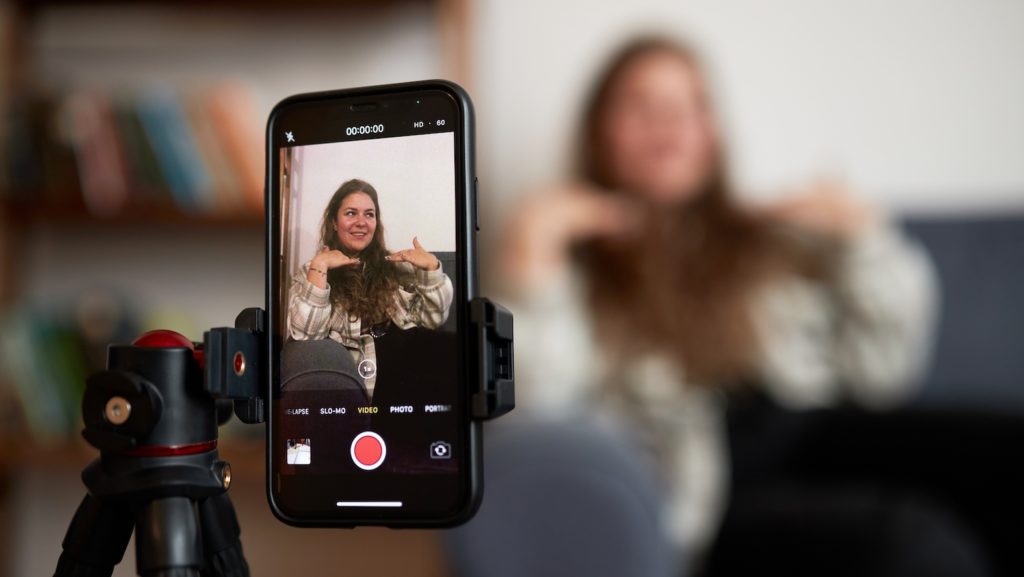Last December I found myself unable to shake a story I had read in the Wall Street Journal. It has bothered me into the new year.
The article chronicled the rise and subsequent demise of David Hollis, Instagram influencer, former Disney executive, and ex-husband of Rachel Hollis, the popular blogger and self-help author of “Girl, Wash Your Face.”
The profile was framed as a glimpse into the “weirdly intimate world of social-media influencers, where you are personally the product and everything you do in your life can be produced into a commercial event.”
His ex-wife, Rachel, rose to fame with a viral Instagram post about her post-partum physique. After receiving a tidal wave of positive feedback for her vulnerability, she launched a self-help brand built on sharing the details of her personal life — including issues with marital intimacy and parenting ups and downs — with her nearly 2 million Instagram followers.
Eventually, David got on board and built his own brand of self-help convert and relatable dad. David shared his thoughts, feelings, and struggles with an audience of 400,000 people.
The toll of performing day in and day out for an audience of strangers, as well as monitoring their comments and feedback, eventually led to the breakdown of their marriage and David’s accidental death from alcohol and drugs.
This December, I couldn’t stop thinking about another online “influencer,” Lily Phillips, of OnlyFans fame. OnlyFans is a British-based subscription platform, where creators and performers post content for paying subscribers. The founder, Tim Stokely, said he wanted content creators to have more control over their work. The site is now primarily used for pornographic content.
Twenty-three-year old Phillips has reportedly earned $2 million from her 36,000 paying subscribers. Yet she became a household name this December with the release of a YouTube documentary chronicling her 24-hour sexual marathon with 101 men.
One of the most circulated clips of the documentary shows Lily in tears after the fact, discussing how robotic the entire episode was. Just the same, the stunt generated international news coverage and boosted her followers on other social media platforms by hundreds of thousands.
The commentary on the stunt and its aftermath has been wide-ranging and varied: Lily is a victim of a sexual revolution gone wrong; Lily is possessed by the forces of darkness; Lily is exploiting herself and has no one else to blame; Lily had to dissociate to make it through; Lily is likely exhibiting hypersexuality due to past trauma.
Despite these different takes, nearly everyone agrees that the footage reveals a psychological toll of uncharted magnitude.
I have nothing to add to what’s been said, other than that Lily needs 1,000 rosaries prayed for her this January, when she plans to sleep with 1,000 men in 24 hours.
I do not believe she can survive such a thing. Doctors would have to weigh in on the physical capacity for it, but everyone else — including her parents who seem to be watching on the sidelines — must know that her soul and mind are in grave peril.
While Hollis and Phillips might be extreme examples of influencing gone wrong, I believe that their stories are the logical endpoint of what has been called the “attention economy.”
It is obvious in a capitalist society that businesses would use our phones and social media sites to sell us products and generate revenue, since we collectively spend an embarrassing amount of time on them.
But what does it mean that individuals have ventured into this space? According to one poll, 57% of Gen Z Americans want to be a social media influencer. And companies are recruiting and willing to pay.
What should Catholics think of self-commodification as a means of generating income or as a viable career path?
I don’t think we’re thinking about this enough. In fact, Catholic influencers are numerous themselves and include writers, speakers, entrepreneurs, and even stay-at-home moms. Many of these figures have built their followings by being open about their marriages, children, vocations, illnesses, and grief — all while linking to products they use or produce themselves.
Their business is built on trust, which is fostered by inviting strangers to observe them intimately. This is “Rear Window” voyeurism, only orchestrated by the one being watched.
I believe many of these people are posting in good faith and with genuine belief in the possibility of building community on digital platforms. Others must believe that what they are doing is evangelizing the “digital highways” of which Pope Benedict XVI spoke.
But we are not built for this scale of intimacy, and our followers are not capable of providing reciprocal vulnerability. We do not have the capacity — in terms of time, proximity, or personal attention — to develop real relationships with this number of people.
Nor should one build a “brand” on the back of one’s children, who deserve the space to grow up in freedom and privacy. We’d all be wise to remember that the sacrament of marriage is between two people for a reason.
The Church has long protested the commodification of human beings: Slavery, human trafficking, prostitution, certain types of reproductive technologies, the sale of organs are all seen as gravely immoral, because they involve the exchange of money for human flesh. They put a price on the priceless.
Online influencing might not seem as reprehensible as the above, but it does require that we become the thing which we’re selling. We’ve quietly slid into accepting this as normal. But it’s changing us. Life has become performance art, and those in our orbit part of the show.
Hollis and Phillips are casualties of a culture that sees people as products and monetizes moments, whether intimate, staged, or a combination of both.
Our Lord warns us that the road is wide that leads to destruction. Online sharing should be careful and narrow. Our lives literally depend on it.

